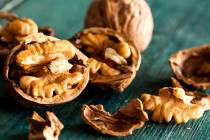Smell and texture make lutefisk a tough sell
Karen Holien likes to say she's tried lutefisk twice: "Once going down — and another time coming back up."
That definitely deserves a rim shot, but it's easy to forgive the old joke because lutefisk is the Rodney Dangerfield of foods. Cruise around the Internet for a few minutes and you'll find coffee mugs emblazoned with "Friends don't let friends eat lutefisk." And then there are the cartoons, such as the Golden Arches-style sign for "McOlson's Lutefisk Burgers," with the notation, "One sold." Or the one with the guy asking his waiter, "What's this fly doing on my lutefisk?" and the reply, "Gagging." Or the story Holien tells about Ole, who had a bunch of skunks take up residence under his porch, so he threw lutefisk under it.
"The skunks left, but he attracted about two dozen Norwegians," she said.
Yet lutefisk holds a special place in the heart of those of Scandinavian ancestry. Note we didn't say "Scandinavians," because, as Smithsonian magazine notes, "Scandinavians rarely eat lutefisk. Far more lutefisk is consumed in the United States, much of it in church and lodge basements."
It's consumed at least twice a year in Las Vegas, and will be on the menu at the Jan. 30 dinner sponsored by the Vegas Viking Lodge of the Sons of Norway (they'll have plenty of other foods as well; details follow). The Desert Troll Lodge of the Sons of Norway also has a lutefisk dinner at the Elks Lodge on the first Saturday in November (email deserttrollsvegas@gmail.com).
So what exactly is lutefisk? Well, it's cod fish preserved in lye. But don't worry; it's rinsed multiple times before serving.
"Preserving it in lye and multiple rinsings is what makes the texture so gelatinous," said Holien, cultural director of the Vegas Viking Lodge.
Yes, gelatinous fish.
In Norway, Holien said, lutefisk was a poor man's food. Stock fish, or cod, that couldn't be sold or used were dried with lye to preserve them. How that process of preservation came about remains uncertain, she said.
"There were a couple of stories," she said, "that somebody accidentally dropped the cod in the ash pile; lye is made from ashes. And they were too poor to throw it away, so they soaked it in water and ate it anyway."
Whatever its origin, lutefisk has become a culinary badge of honor for Norwegians.
"The beauty of lutefisk," Holien said, "is spreading our heritage, back to the old country and the days of our grandparents."
Holien said her parents liked lutefisk, and her grandfather "just loved it." Back in North Dakota, she said, her parents used to go to lutefisk dinners at Lutheran churches about once a month. The dinners had their own cultures, she said, with entertainment and precise rules of etiquette.
"I know a lot of people who will drive miles to eat it," said Kim Roden, another member of the Vegas Viking Lodge and a former resident of North Dakota, where, she said, lutefisk is even sold in frozen dinners at truck stops.
Roden said that in previous generations, where you lived in Norway helped dictate whether you ate lutefisk. Her husband and her mother, she said, are from coastal areas, so they always had plenty of fresh fish. Her father's family was from the northern interior and didn't have that luxury.
"I have to admit that I'm not a lover," Roden said. "It's just one of those dishes you either love or hate; there's not a lot of middle ground. I think it's something everybody should do once, but not more than once.
"The smell for some people is perfume. You can't mistake it. Once you have smelled it, if you go into a room 20 years from now, you'll be able to identify it. I can't even describe it."
"The first thing you notice is the smell," Holien agreed. "If you can get past the smell, it's not bad."
"If you like fishy fish, you'll love it," Roden said.
"The texture is kind of like Jell-O," Holien said. "It's an acquired taste."
Bob Sturgeon is one of those who have acquired it. He's of Norwegian descent, but the first time he tasted lutefisk was when the Vegas Viking Lodge started its dinners in 1999.
"The first time it was, 'Oh, God,' just from the looks of it, and it had kind of a smell to it," he said.
But the lodge had designated Sturgeon lutefisk cook, so he learned to like it.
"I had to cook it, so I had to taste it," he said. "I like it with a little bit of bacon grease on it, just a spoonful, because you don't want to kill it too much." At the dinner, he said, the lodge serves it with a choice of melted butter or cream sauce; they have a little bit of bacon grease, but it doesn't last long.
Sturgeon, the lodge president, said a couple of variables affect the taste. Real Norwegian codfish, he said, smells stronger than the pollack or haddock that also may be used. And it's milder if the processor uses birch ash instead of lye. The lodge gets their supply from Olsen Fish Co. in Minnesota, and Sturgeon said they use Norwegian cod and lye.
Lutefisk has become such a part of Scandinavian lore that it even figured in a scene in the animated megahit movie "Frozen."
"A lot of cultures have foods that are considered weird to other people," Holien said, "but it's something you grew up with and your parents and grandparents liked it, so you develop a taste for it."
"It's part of a tradition," Sturgeon said. "It makes you feel Scandinavian, to some degree: 'I've eaten my lutefisk for the year.' "
Still, the funny stories abound.
"The first dinner we had, when it was all over, the next time I went out to the lodge, the guys asked, 'What the hell is that you had in there?' " Sturgeon remembers. "The next morning, there must have been 50 cats on the street.
"Now we have to close the lids on the dumpsters."
Contact Heidi Knapp Rinella at Hrinella@reviewjournal.com. Find more of her stories at www.reviewjournal.com, and follow @HKRinella on Twitter.































